The only gluten-free pizza crust recipe you’ll ever need. Easy to make and works with basically any gluten-free flour blend. Bakes up chewy and crispy!
Hundreds of reviewers agree this recipe makes the best gluten-free pizza crust ever!
This tried-and-true recipe was originally published in 2016 and continues to be one of my #1 recipes today.
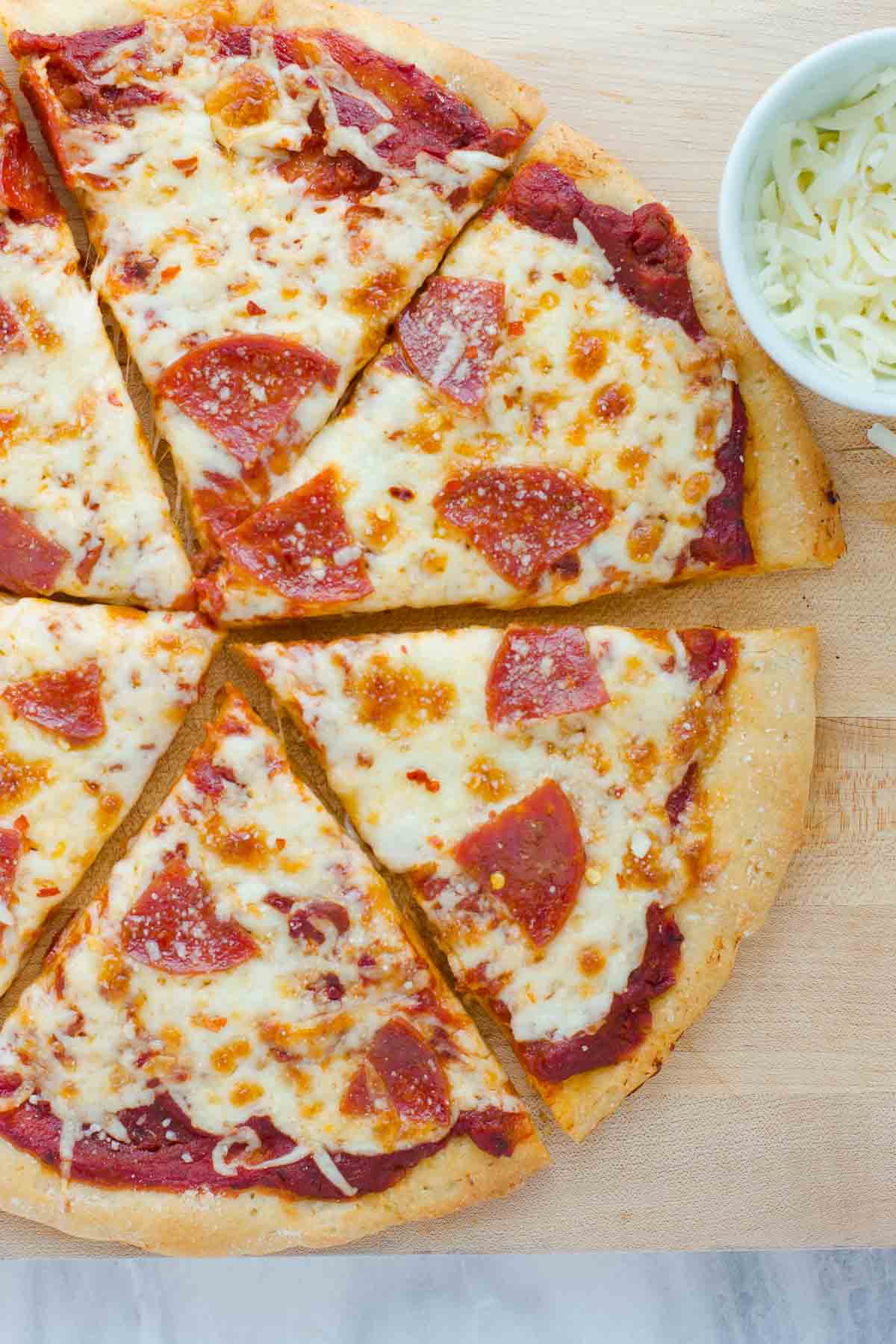
Homemade pizza night might just be my favorite food ritual! It always means happy kids, a bubbly special drink, perhaps a side of my favorite kale salad, and the best gluten-free pizza on this delicious crust.
I’ve tried a lot of gluten-free pizza crust recipes and this is my favorite. It’s easy to make and makes a crust that is both crispy and chewy.
So many gluten-free pizza crusts are thin crusts that turn out crunchy like a cracker. If you’re wanting a gluten-free crust with a good chew, this is it!
This pizza crust has the perfect amount of chew and bakes up crispy on the bottom.
You can use it as a base for any gluten-free pizza recipe. We most often use it to make classic pepperoni and BBQ chicken pizzas. You can pair it with any of your favorite toppings!
Why You’ll Love this Recipe
- Easy to make
- Works well with any kind of gluten-free flour blend
- Chewy, but crispy texture
- Delicious flavor
- Work with any kind of toppings
If you’re looking for more perfected gluten-free recipes try this gluten-free banana bread, gluten-free sandwich bread, gluten-free crescent rolls or gluten-free flatbread!
Serve this pizza with these gluten-free cinnamon breadsticks!
VIDEO: Watch how to make it!
Ingredients You’ll Need
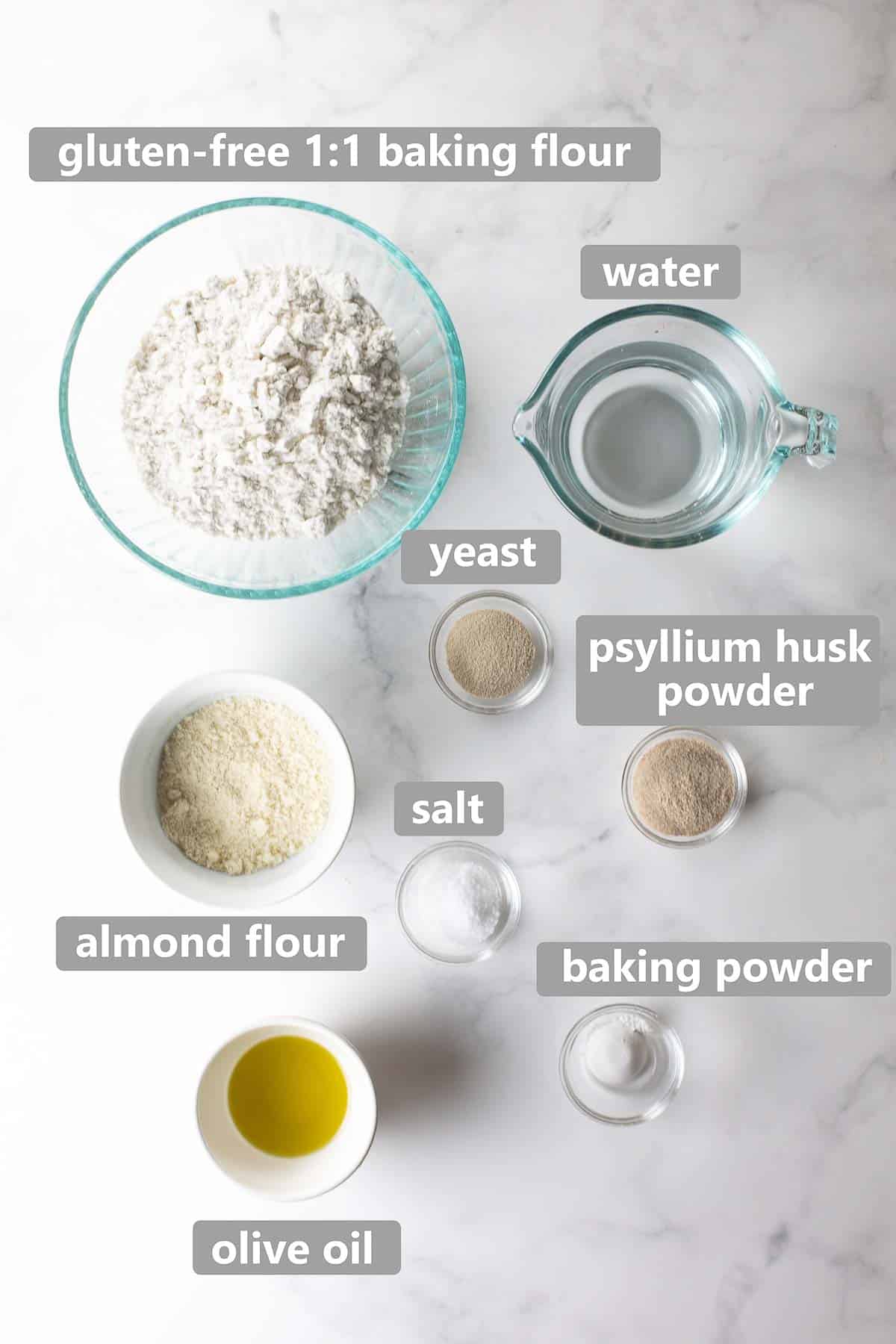
Here are a few notes on the main ingredients for this pizza crust:
- Gluten-Free 1:1 Baking Flour: I like to use a high quality gluten-free measure-for-measure flour blend like King Arthur Flour in my baked goods. This blend has a mixture of brown rice flour, white rice flour, potato starch and tapioca starch. This recipe works well with most types of gluten-free all purpose flour!
- Almond Flour: Helps with texture and browning. Adding a little almond flour is one of my favorite tricks in gluten-free baking. The extra protein/fat in the almond flour this pizza crust gives it great flavor and helps it brown up nice and golden.
- Honey or Cane Sugar: Helps activate the yeast and gives the dough great flavor.
- Psyllium Husk Powder: Don’t skip this ingredient! It had elastic properties that give the crust a springy, bready consistency.
- Baking Powder: This is an unusual ingredient in pizza crust but it lightens up the dough.
- Instant Yeast: Saf yeast is my favorite. Gluten-free doughs don’t need an extra rise, so instant yeast works great! You also might like these gluten-free cinnamon rolls.
- Salt: Gives the gluten free pizza crust great flavor!
- Olive Oil: For a little richness and golden color.
You can easily make this nut-free by leaving out the almond flour. Simply replace it with more Gluten-Free 1:1 Baking Flour!
How to Make Gluten-Free Pizza Crust
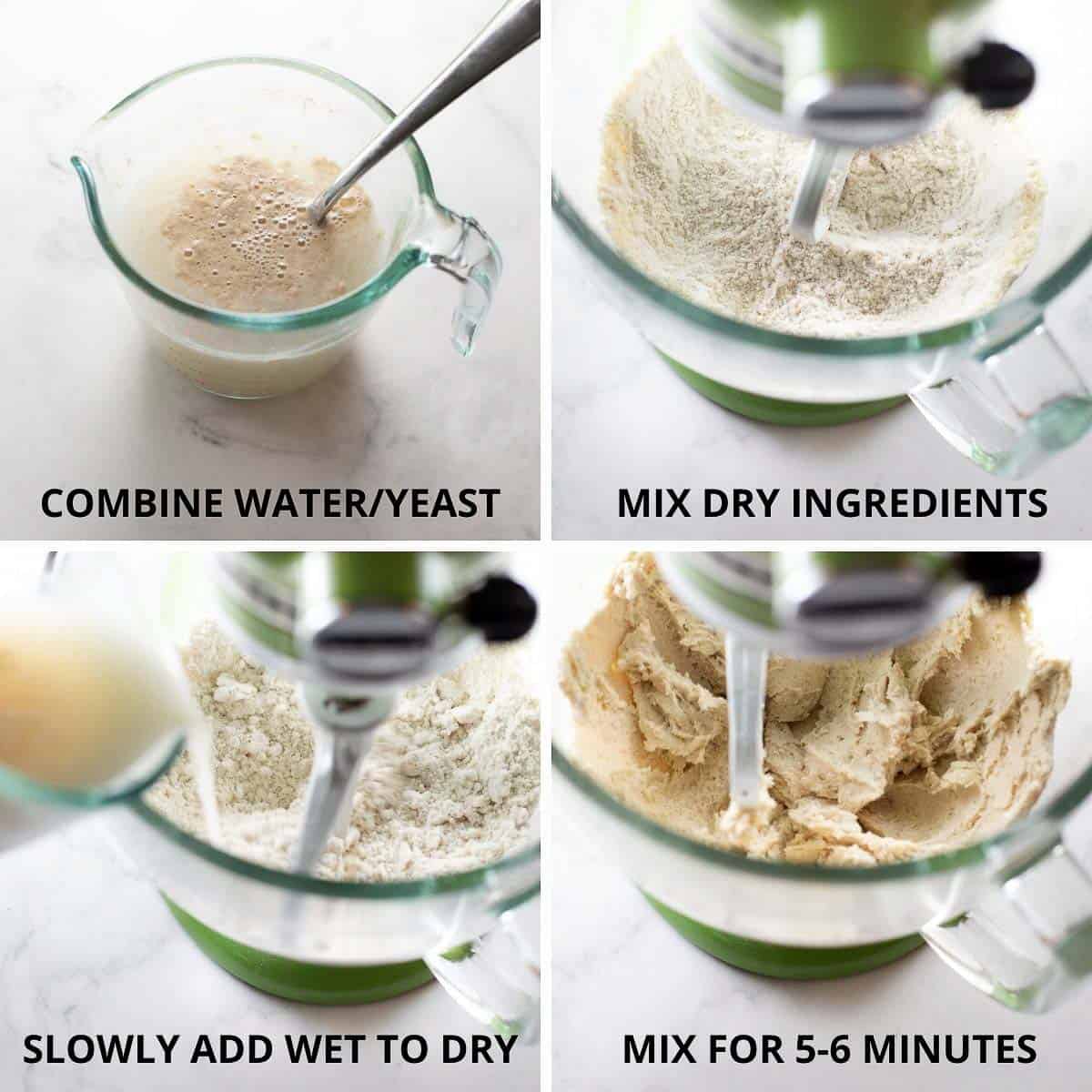
- Combine the warm water, sugar, and yeast in a glass measuring cup or small bowl. Whisk to combine.
- While the yeast is proofing for 3-4 minutes, combine the gluten-free flour, baking powder, salt, and psyllium husk powder in the bowl of a stand mixer.
- With the mixer running on low, slowly add the yeast mixture and olive oil to the dry ingredients.
- Increase the mixer to medium speed and beat for a few minutes.
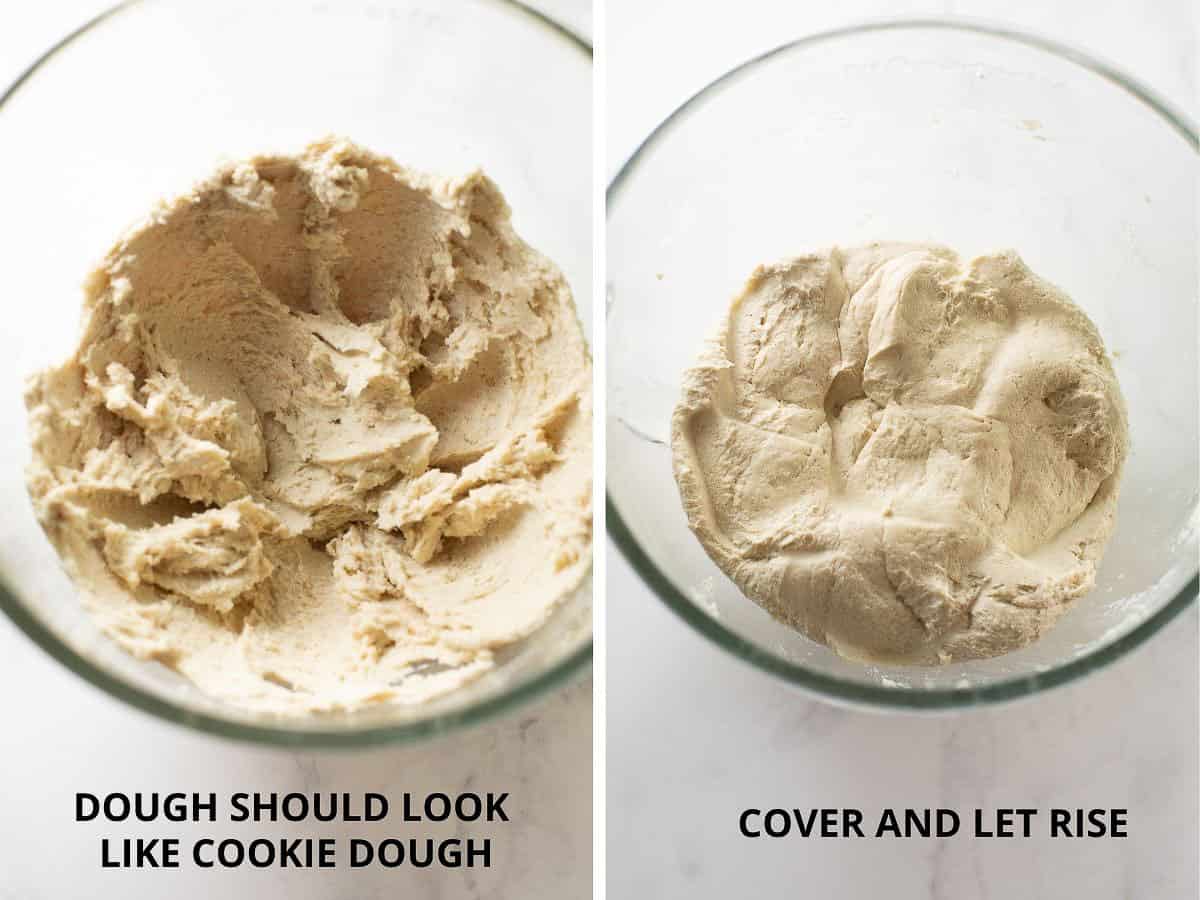
Gluten-Free Pizza Dough Consistency
Your dough might be more runny depending on what gluten-free flour blend you use. All gluten-free flour blends are slightly different and even how you measure the flour can cause differences. See the video above to get a visual on the texture you’re going for.
The dough should be more like cookie dough than runny batter. I would suggest mixing the dough for 3-4 minutes first, then adding more flour if needed (just a little at a time!) to thicken it up slightly.
- Using an oiled spatula, press the dough off the sides into a ball. Cover and let rise for 30 minutes.
- Preheat the oven to 425F. Oil a 12-inch round pizza pan. Press the dough into the pan. The best way to handle the gluten free dough is with oiled hands. The dough will shrink slightly as it bake, so press the dough as thin as you can to cover the pan. Let the dough rise for another 10 minutes at room temperature.
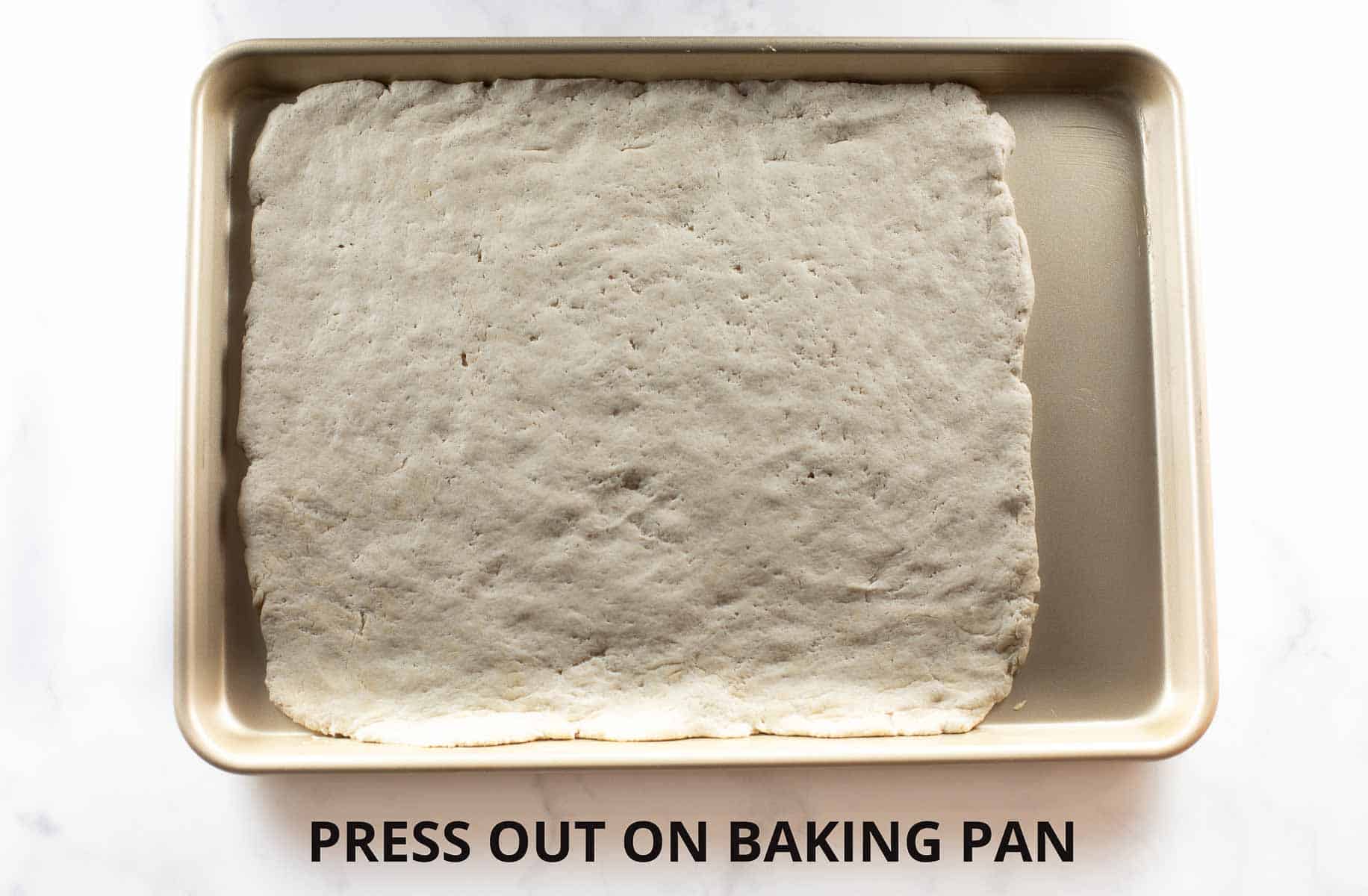
- Bake for 15-20 minutes. Remove from the oven and add your favorite sauce (tomato sauce, BBQ sauce, gluten-free alfredo sauce, etc.) and toppings. Bake for another 10-15 minutes depending on your toppings. Let cool for a few minutes before slicing. Enjoy!
Tips for the Best Gluten-Free Pizza
- One thing I’ve noticed at a lot of restaurants that serve gluten-free pizza is that the pizza never gets crispy on the bottom. Gluten-free things generally need to be baked longer than regular baked goods.
- With this recipe I parbake the crust for 15-20 minute before adding the toppings. Then bake it for another 10-15 minute with the toppings on and you’ll have perfectly crispy, chewy pizza!
- I bake the pizza on these pans, then transfer it to a wooden cutting board to slice up. Any cookie sheet will work but I recommend greasing the sheet with shortening so it doesn’t stick. You can also use parchment paper if you prefer.
- Another great thing about this crust recipe is that it works with basically any gluten-free flour blend. It turns out wonderfully with King Arthur Flour and Bob’s Red Mill gluten-free flours. You can use what you have on hand.
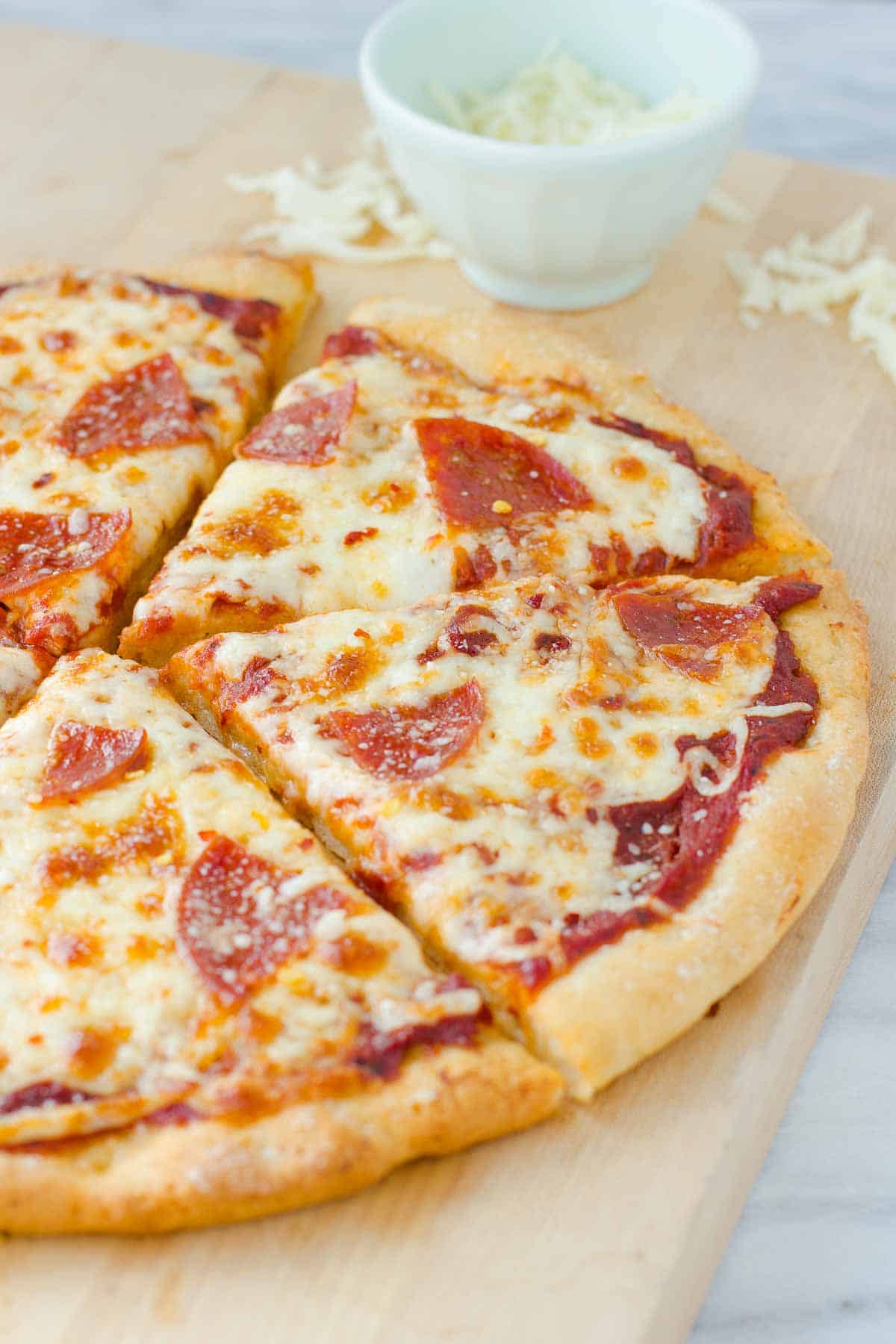
Gluten-Free Pizza FAQs
Gluten-free pizza crust is typically made from gluten-free flour, yeast, water and a binder like psyllium husk or xanthan gum. Gluten-free flour typically contains a variety of flours and starches from gluten-free grains (like rice, sorghum and tapioca flour). This gluten-free pizza crust also contains baking powder to make it lighter.
Gluten-free pizza crust is not necessarily healthier than regular pizza crust. Both regular and gluten-free pizza crust are typically made of flour and starch. It’s just the gluten-free pizza crust is made from gluten-free flours such as rice flour, tapioca starch and more.
However for those with celiac disease or gluten intolerance, making gluten-free pizza crust is a great way to enjoy pizza again.
It is best to use a high-quality gluten-free 1:1 baking flour, also known as measure-for-measure flour for gluten-free pizza dough. Gluten-free flour blends typically contain a mixture of naturally gluten-free flours and starches to mimic traditional wheat flour. Typically xanthan gum or guar gum helps is added to gluten-free flour as a binder.
Recipe FAQs
You cannot freeze the dough, but the par-baked crusts freeze great! I love making an extra crust and freezing it for later when I make this recipe. Follow all the instructions up to where you bake the crust for the first 15-20 minutes. Bake the crust for the first 15-20 minutes then cool completely.
Once cooled wrap in a layer of plastic wrap followed by a layer of foil. Freeze for up to 1 month. To bake from the freezer, preheat the oven to 425F (I like to use a pizza stone.) Top the frozen crust with toppings of choice then slide directly onto the pizza stone to bake or bake on a pan. Bake the crust for 15-20 minutes until crispy and the toppings are bubbly.
Your dough might be more runny depending on what gluten-free flour blend you use. All gluten-free flour blends are slightly different and even how you measure the flour can cause differences. See the video above to get a visual on the texture you’re going for.
The dough should be more like cookie dough than runny batter. For best results, I would suggest mixing the dough for 3-4 minutes first, then adding more flour if needed (just a little at a time!) to thicken it up slightly.
You can easily use an additional 1/4 cup gluten-free 1:1 baking flour in place of the almond flour.
Looking for more gluten-free dough recipes? Try my gluten-free breadsticks.
More Gluten-Free Recipes
I hope you love this gluten free pizza recipe as much as we do! If you try it be sure to leave me a comment/rating below. I’d love to hear from you!

The Best Gluten-Free Pizza Crust
Video
Ingredients
Dry Ingredients:
- 1 1/2 cups (225g) gluten-free 1:1 baking flour
- 1/4 cup almond flour
- 2 tablespoons whole psyllium husk
- 1 tablespoon sugar
- 1 1/2 teaspoons instant yeast
- 1 teaspoon baking powder
- 3/4 teaspoon salt
Wet Ingredients:
- 1 cup warm water about 110F
- 2 tablespoons olive oil
Instructions
- In the bowl of a stand mixer, add the gluten-free flour, almond flour, psyllium husk, sugar, instant yeast, baking powder and salt. Mix on low speed to evenly combine.
- With the mixer running on low, slowly pour in the water and olive oil. Increase the speed to medium-high and beat for 5 minutes.
- Using an oiled spatula, press the dough off the sides into a ball. Cover and let rise for 45-60 minutes.
- Preheat the oven to 425F. (Optional: Place a pizza steel or pizza stone in the oven as it preheats.) Line a 12-inch pizza pan with parchment paper. Spray the parchment paper lightly with cooking spray.
- Using oiled or wet hands, press the dough evenly into the pan. The dough will shrink slightly as it bakes, so press the dough as thin as you can to cover the pan. Let rise for another 10 minutes.
- Par-bake the crust with no toppings for 15-20 minutes. Remove from the oven and add your desired toppings.
- Bake for another 10-15 minutes depending on your toppings. (If using a pizza steel or stone, slide the crust off the pan and parchment paper and bake directly on the steel/stone for 10-15.) .
- Remove from the oven and let cool for 5 minutes before slicing. Enjoy!
Notes
- One thing I’ve noticed at a lot of restaurants that serve gluten-free pizza is that the pizza never gets crispy on the bottom. Gluten-free things generally need to be baked longer than regular baked goods.
- With this recipe I parbake the crust for 15-20 minute before adding the toppings. Then bake it for another 10-15 minute with the toppings on and you’ll have perfectly crispy, chewy pizza!
- I bake the pizza on these pans, then transfer it to a wooden cutting board to slice up. Any cookie sheet will work but I recommend greasing the sheet with shortening (not olive oil) so it doesn’t stick. You can also use parchment paper if you prefer.
- Another great thing about this crust recipe is that it works with basically any gluten-free flour blend. It turns out wonderfully with King Arthur Flour and Bob’s Red Mill gluten-free flours. You can use what you have on hand
Nutrition
I hope you love this recipe as much as we do! If you try it be sure to leave me a comment/rating below. I’d love to hear from you!
Recipe adapted from King Arthur Flour
**This post contains affiliate links to the products I always use.

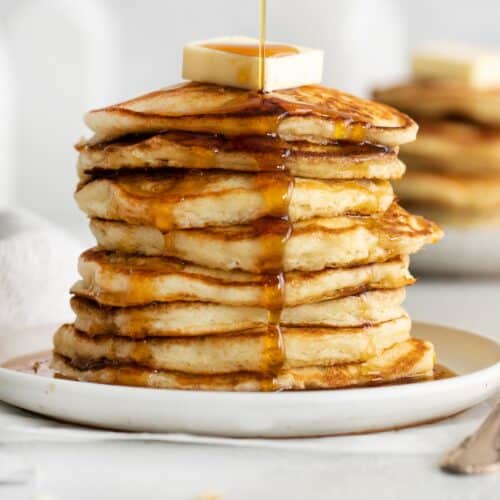
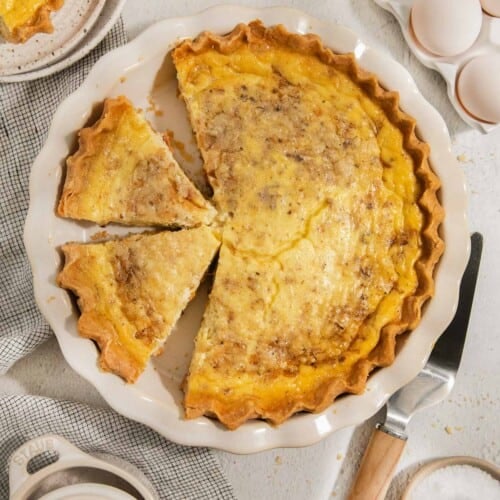

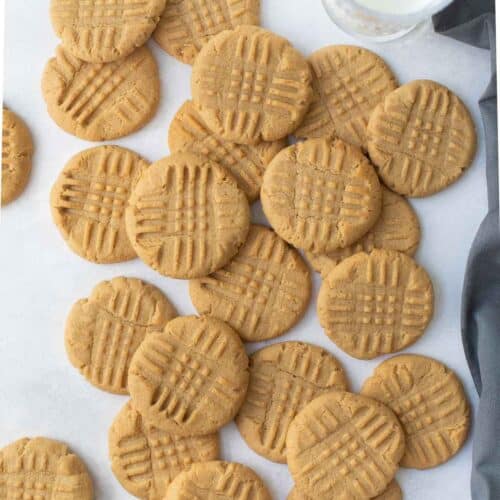
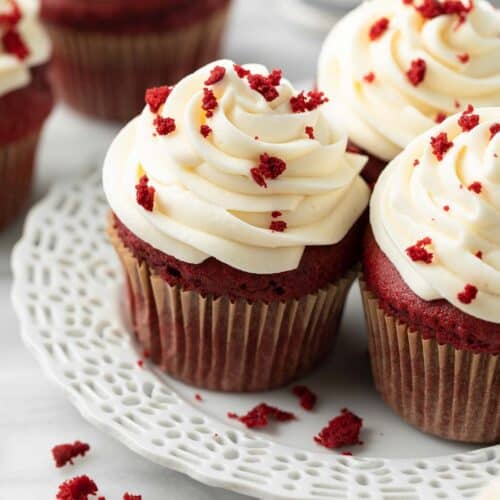
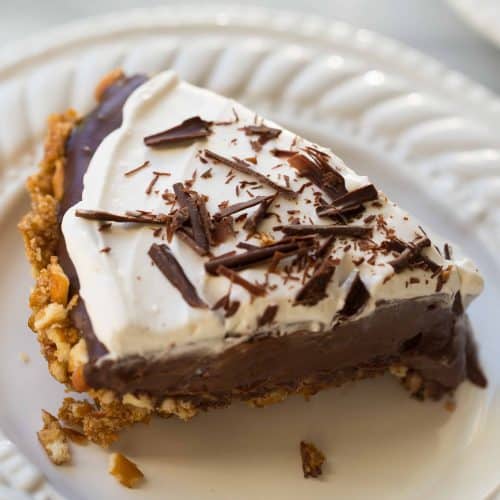
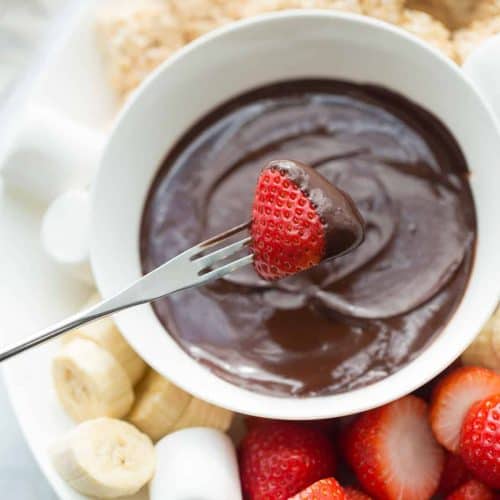


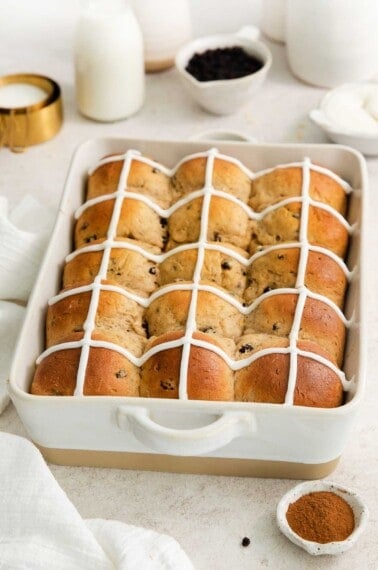
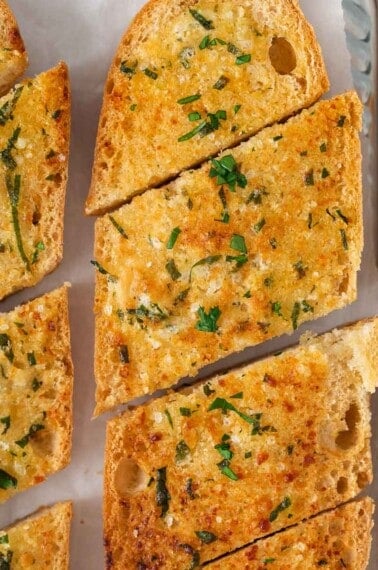
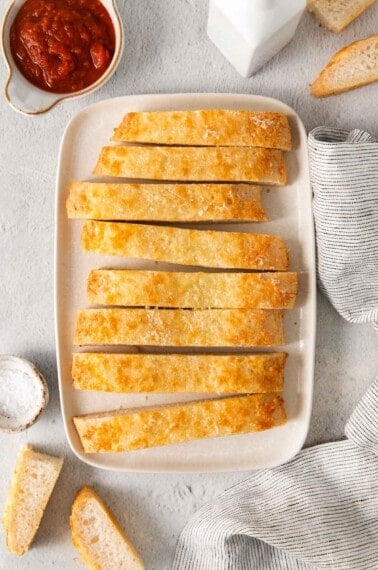
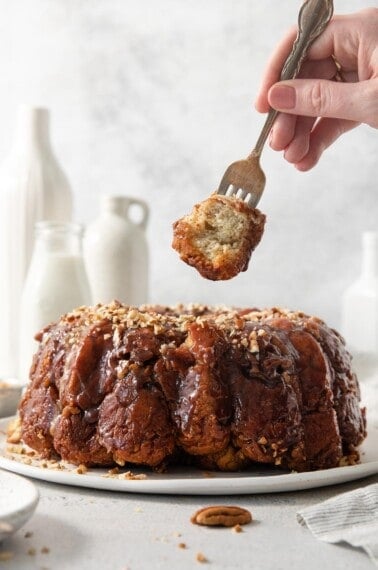










I have severe dairy, wheat, soy and gluten sensitivities and haven’t had a decent pizza in years! This was definitely the best recipe I’ve tried so far. I used Pamela’s All Purpose Gluten-Free Flour mixed with almond flour and the result was a perfectly light, fluffy, chewy, and slightly crisp crust. It was a bit softer than I’d prefer, but that’s because I doubled the recipe and didn’t increase the pan size enough so it was quite thick. Thank you so much for the amazing recipe, Erin!
Hello Erin, like many others here I was diagnosed with gluten sensitivity and have been looking for a good pizza dough recipe. So far I have tried it as directed BUT first time I did not have almond flour and used xanthan gum.. It came out delicious and my husband and I were very pleased. Second time I had almond flour but no Psyllium Husk Ground Powder, It came out better than the first time. Yesterday the Psyllium Husk Ground Powder arrived and I will be trying your recipe for the first time with all the exact ingredients. I will make a final post when I’ve tried it. I can’t wait. So, my question is “Do you double the recipe when making 2 pizzas and do you use 2 (12 inch) pizza pans. What size pan would you recommend for 1 pizza, thin crust?
Fabulous- absolutely the best gluten free pizza crust I’ve ever eaten. Thanks for a great recipe!
Is there a substitute for the almond flour? Allergies in our house so it needs to be nut free
Thanks
Yes! To make it nut free: Substitute 1/4 cup of gluten-free all-purpose flour for the almond flour.
The nutritional information seems quite high for the crust alone. Is this based on a cheese/pepperoni pizza or just the crust plain? If it’s just the crust, it should identify that accurately.
Wow! This is truly the best pizza crust I’ve eaten in the last 22 years, since being diagnosed as celiac. Even my husband, who can eat wheat pizza crusts, loved this, saying it’s “the most like wheat pizza crust.” So good! My batter was difficult to spread in the pan with my oiled hands, but was easily spread with an oiled spatula. I didn’t have any psyllium husk powder, so substituted xanthum gum. The crisp crusp, the flavor! Oh my! Thank you.
Hi All–A little more info about exactly what I do. The flour I use is from Costco–Perfect Flour Blend. I use the psyllium husks, too. I heat my water and test it with a thermometer b-4 adding the yeast. Once the yeast/sugar is proofed, I mix everything with my simple hand mixer. I time it with a time.r. The first time I did not do this and didn’t mix it enough. I use a heated bowl (I just put hot water in the bowl to make it cozy) and then once the dough is mixed I place the dough in a greased, heated bowl, sitting on a cookie rack over a bowl of hot water. I cover it with a towel. Simple but it makes a cozy place for the dough to rise. I use oiled hands to pat the dough on the parchment round. I slightly spray the round, too. It all works quite effortlessly. I have found pizza heaven!
Thanks for all the helpful tips and insights! So glad you like the recipe!
Hi Everyone! I wanted to share my excitement about this recipe. It is truly the only gluten-free crust recipe you will ever need. I’ve tried about 6 other recipes plus numerous cauliflower crust recipes. I had settled for the cauliflower crust but the problem with that is you had to limit your toppings. The crust had lots of fat in it because of the cheese. So there was never the crispy bottom that we all love. I have made the above recipe 4 times and each time it is perfect! I do raise the dough over a bowl of hot water to make sure it is rises up to the full potential. The first time I made it I didn’t do that. This is truly gluten-free heaven! You can put whatever toppings on that you like, even extra cheese and it does not affect the crispiness at all. This is now the only recipe I use, hands down. I shape my crust on parchment paper pizza rounds and bake it directly on the oven rack. Once it is par-baked, it is firm to handle and add your favorite toppings. I bake it once it is topped on the parchment and it is absolutely perfect every time! Friday nite’s pizza will be this marvelous crust plus mushrooms, garlic, gouda cheese and oregano! Any topping works, every time!
I think your portions are a little off. Not enough yeast or flour. I’ve looked at other recipes and they say 1 Tablespoon yeast and 3 cups flour. Do you mean a total of 210 grams flour?
Hi! I was just wondering why the ingredients have yeast AND baking powder. Why is that? Could I use just yeast for it to rise? Thanks.
You need both to give the gluten-free dough extra lift and the right texture. I hope that helps!
This is my go-to pizza dough recipe. Simple and delicious every time!
Thank you so much for this recipe. I was able to adapt it into 2 different pizzas. One I rolled out with more flour into a thin and crispy base. For the second I smothered a cake pan in olive oil and placed the rest of the dough in to make what I remember Pizza Hut deep dish BBQ pizza tasting like (coeliac 10 years now in the UK). Turn out perfect!
Didn’t have almond flour but used potato starch instead as it is easier to get in the UK.
Hello!
I think all of the folks complaining that this was to thin and runny just didn’t mix it for long enough. I am a pastry chef (over 20 years), and found out 10.5 years ago that I have Celiacs. I know! Right? I love the recipes from Erin that I have tried. I have a pizza crust recipe I developed a few years ago, but I’ve never been totally happy with it. This one is great! I never though about the psyllium in the pizza crust. I used in several of my bread recipes though to mimic the nuttiness of whole wheat, and the chew. I should have thought about it…. Thank you Erin for making my brain work lol.
Thanks for the comment and helpful insights! So glad you like the recipe!
Thanks Erin. This is an excellent recipe; it took me a few weeks to get it just right, now I can ‘feel’ when it is the right consistency. I love the taste and have recommended it to friends. However I think you might need to amend one measurement. The almond flour is put as a quarter cup or 210 g. By my reckoning a cup is 250g, so approximately 65g/70g works out correctly, and that is what I’ve used. Anyway the main thing is I can enjoy this without bloating up and am grateful for you sharing the recipe.
Delicious pizza dough! I’ve never made my own gluten free crust before but this recipe was well worth the time and effort to make it. I didn’t have the psyllium husk powder so I added a tbl of chia seeds. The texture was amazing, chewy and crispy!